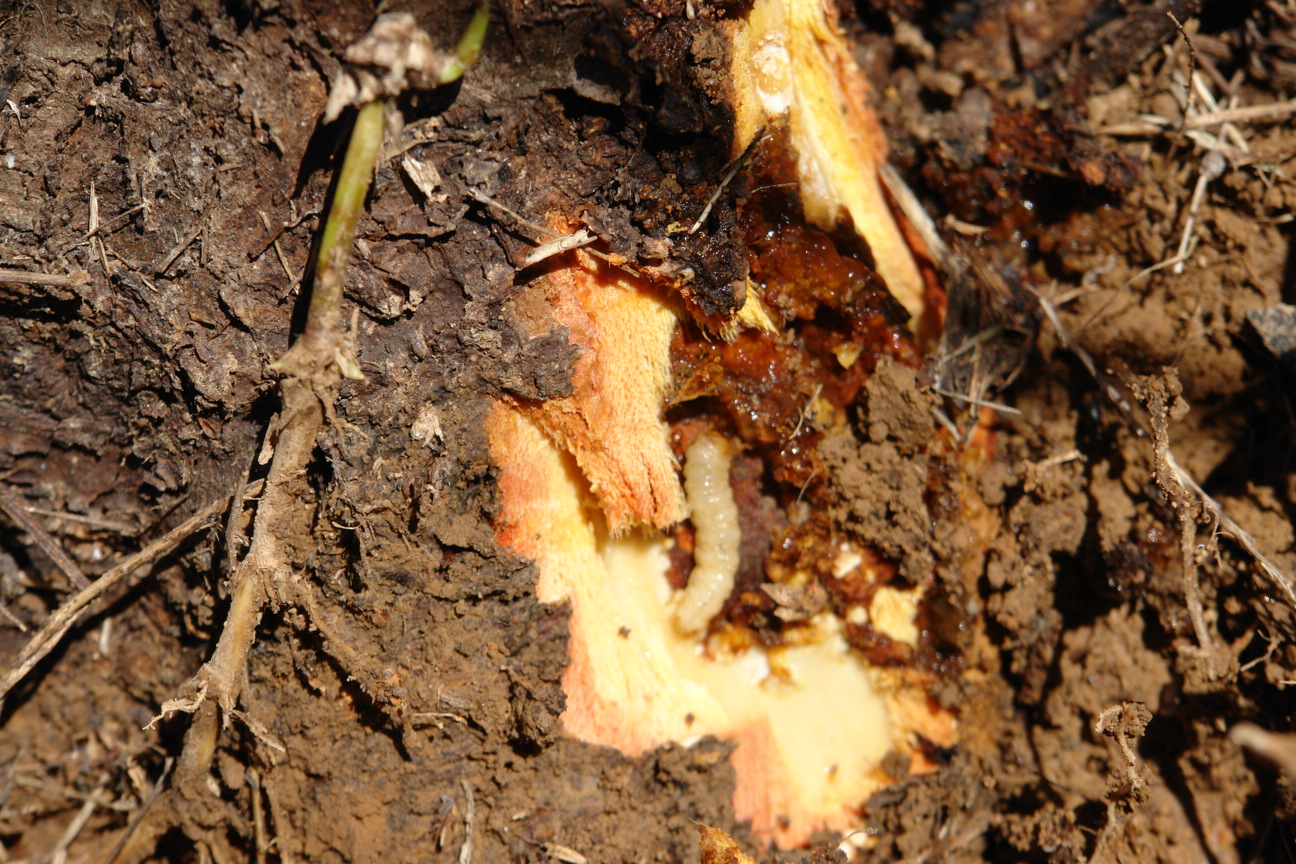Project Overview
Annual Reports
Commodities
- Fruits: apricots, cherries, peaches, plums, general tree fruits
- Nuts: almonds
- Additional Plants: ornamentals
Practices
- Pest Management: field monitoring/scouting, integrated pest management, traps
Abstract:
As the primary source of organic compounds in terrestrial ecosystems, plants have developed a striking diversity of morphological and biochemical mechanisms to reduce the impact of herbivory. Plant defenses strongly select for resistance in herbivorous insects, leading to a high degree of specialization. Subsequently, resistant herbivores utilize host-specific ratios of emitted volatile organic compounds to discriminate between suitable and unsuitable potential hosts. In this study we attempted to elucidate the factors involved in long-range oviposition site selection in the peachtree borer (Synanthedon exitiosa) and lesser peachtree borer (Synanthedon pictipes). In doing so, we hope to facilitate the development of female-oriented monitoring and mass trapping strategies based on the chemical ecology of these economically significant pests. Accomplishing this goal required us to:
- Identify plastic traits associated with host quality;
- Determine what long-range chemical cues are associated with these traits; and
- Assess the degree to which these cues are suitable for attracting sesiids in the field.
The literature suggests that both sesiid peach pests lay more eggs at sites where bark has been damage (Cottrell et al., 2008; Derksen et al., 2006). As wounding is associated with changes in local and systemic volatile emissions, we determined that this trait was suitable. Thereafter we:
- Profiled the constitutive volatile emissions from bark/phloem samples of peach (Prunuspersica), black cherry (Prunus serotina), and apple (Malus pumila) using static HS-SPME GC-MS;
- Documented shifts in the emission of various defensive compounds twenty-four hours after mechanical wounding; and
- Determined whether synthetic blends, mimicking the natural volatile emissions of wounded bark effectively attracted PTB or LPTB females.
We report that mechanical damage affected the emission rate of terpenes, terpene-derived compounds, and benzenoids. Notably, benzaldehyde, p-cymene, camphene, and linalool emission underwent similar shifts in both host species examined. This suggests that one or more of these compounds conveys information about the physical impediments likely to be encountered by larvae colonizing a tree.
Samples collected from cultivated peach trees in the defunct Collins Round Mountain Orchard in Conway, AR (field site) failed to show differences in the rate of volatile emission before and after mechanical wounding. The constitutive profile of these trees also showed dramatically reduced benzaldehyde emission alongside increased diversity and concentration of the sesquiterpenes guaiene, cadinene, caryophyllene, humulene, and farnesene compared to wild peach trees. We attribute this to the fact that healthy individuals were sampled from among trees facing microbial infestation.
Samples collected from the non-host species, apple, emitted two monoterpenes, camphene and alpha-pinene, at higher rates. However, the ratio at which these compounds were emitted strongly favored the former, whereas in Prunus species the compounds were emitted at equal rates. Apple was the only species to emit the sesquiterpene alpha-bergmotene and lacked the sesquiterpene diversity observed in the Prunus species.
Although pheromone trapping was highly successful, neither the kairomone blend based on cultivated peach samples or the blend based on wild peach were suitable for attracting female sesiids. In fact, the distribution of early instar larvae observed in July and August of 2017 may suggest the opposite. The distribution of early instar PTB larvae was mapped to indirectly confirm female activity in the area. In areas where kairmone lures were present, the percent of trees infested was reduced by half. Although the current study was not designed to address the question of deterrence, it may represent a worthwhile avenue for future research.
[caption id="attachment_496526" align="alignnone" width="1296"]
 The peachtree borer causes immense economic damage to peach by feeding on the vascular cambium as a larva. High populations can lead to girdling.[/caption]
The peachtree borer causes immense economic damage to peach by feeding on the vascular cambium as a larva. High populations can lead to girdling.[/caption]
Project objectives:
This project examines the interaction of adult female PTBs and the complex mixture of volatile organic compounds emitted from optimal and suboptimal oviposition sites, with the expectation that such information will inform the development of female-oriented PTB lures. Accomplishing this goal requires the integration of analyses from the realms of metabolomics, animal behavior, and electrophysiology in the laboratory to develop attractive lures, and a subsequent field test of lure efficacy.
With this in mind our primary objectives were initially:
- Identify the volatiles that are likely involved in host selection in the PTB.
- Determine the bioactivity of these volatiles.
- Evaluate the extent to which these volatiles are behaviorally relevant in the lab.
- Test the efficacy of these compounds as lures in the field.